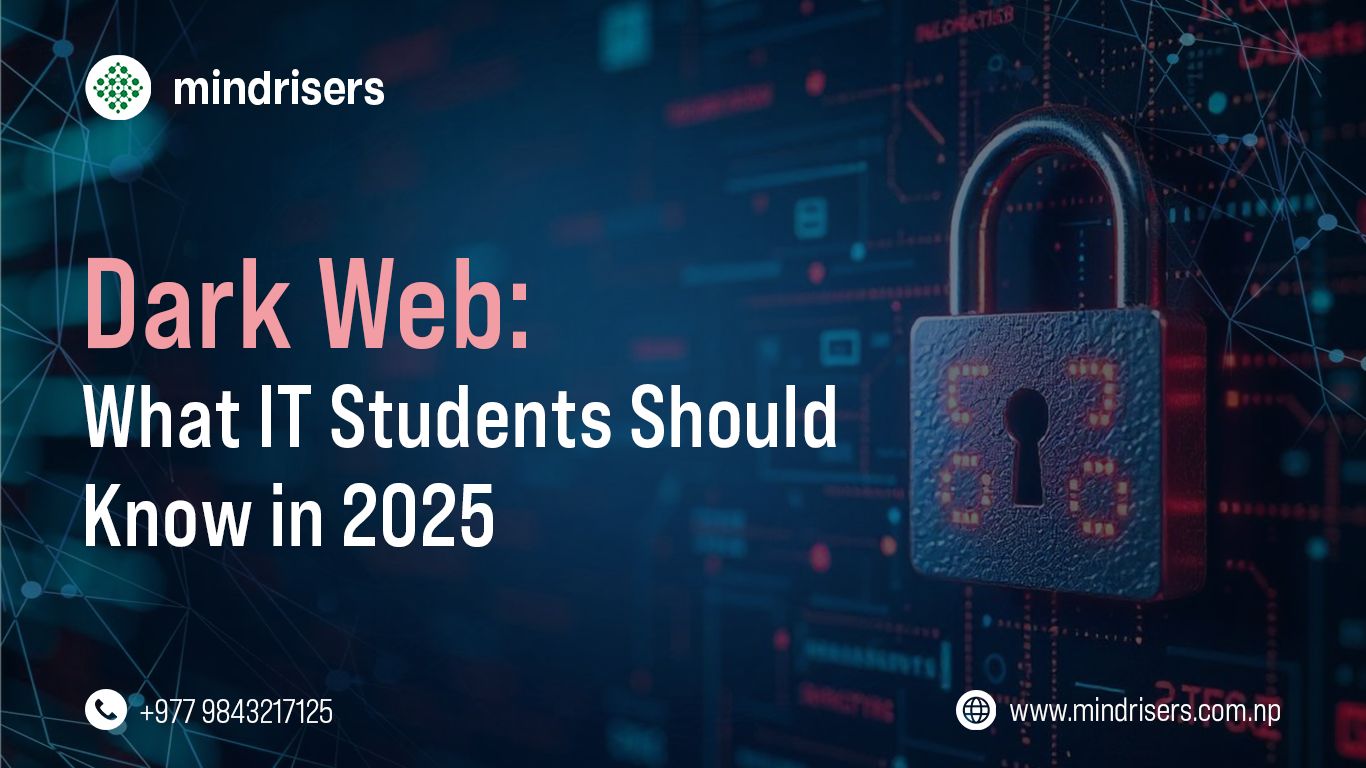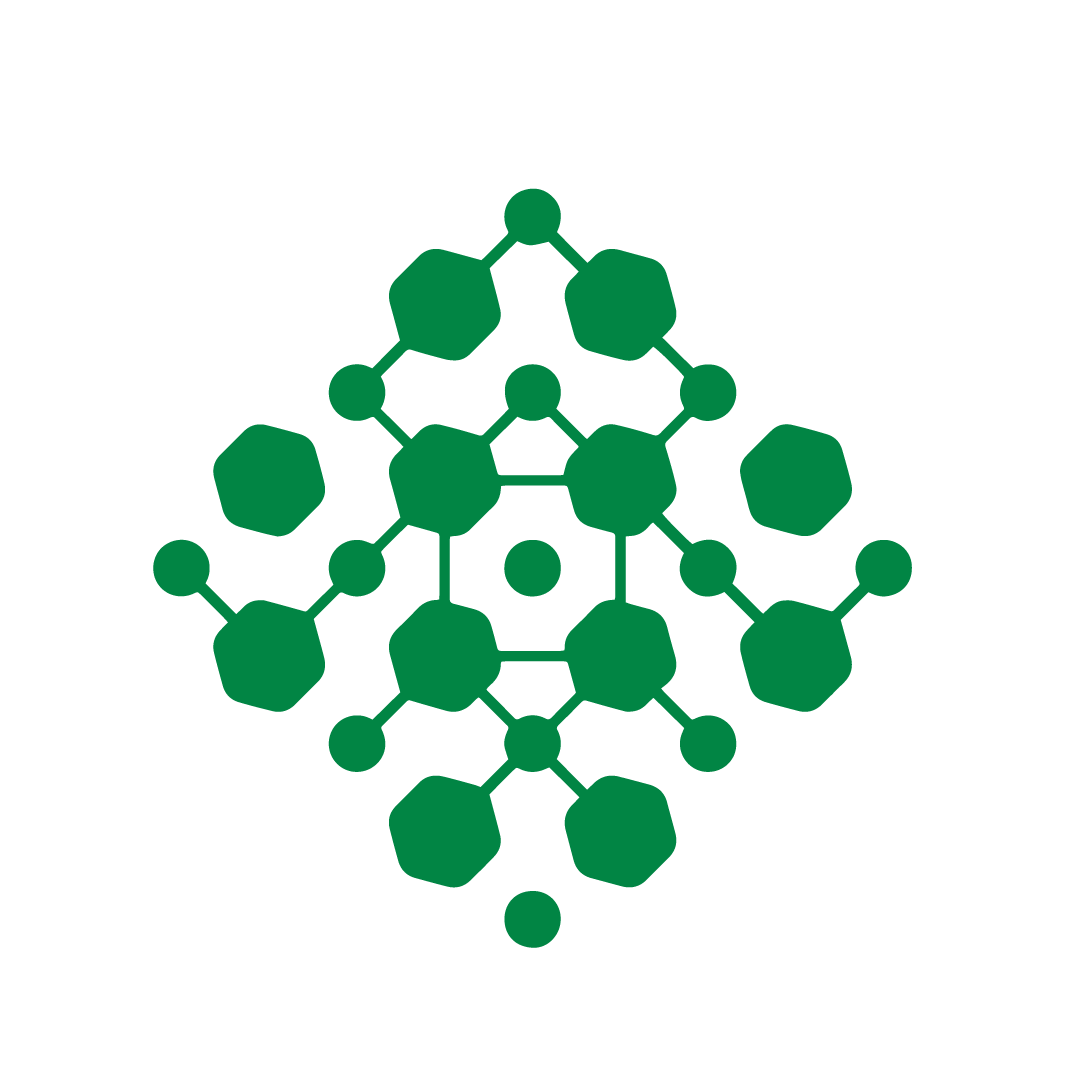
Rupesh Basnet - Author
2025-06-24
Have you ever wondered what the dark web really is, why IT students should care about it in 2025? Unlike the regular internet, the dark web isn’t something you can just open with a normal browser like Chrome or Microsoft Edge. Instead you need a special dark web browser such as Tor which helps to browse anonymously.
If you’re asking, “dark web how to access this hidden part of the internet", it basically means using a dark web browser that encrypts your connection and protects your identity. For IT students understanding the dark web isn’t just about curiosity, it’s a valuable skill that can open doors in cybersecurity, ethical hacking and protecting digital privacy.
What IT Students Need to Know about the Different Layers of the Internet
The internet is not one big open entity but instead consists of different layers with different natures and functions. As an IT student, it is imperative to know about the layers to grasp concepts like online privacy, cybersecurity, and data management. The three broad layers are the surface web, the deep web, and the dark web.
Surface web is what you search for related keywords on a daily basis. It is made up of websites and services indexed by search engines like Google, Bing and Yahoo. Anything you are able to access through regular internet search falls under the category. It's easily accessible, users should be aware of privacy and security risks like tracking and data breaches.
The deep web on the other hand, contains a tremendous amount of information that is not accessible through search engines. These are password-protected websites, private databases, webmail pages, subscription sites and business intranets. The deep web contains most of the information on the internet and is generally safe and legal to access, as it requires proper authorization or credentials. It is not concealed like the dark web, but rather is simply not publicly indexed.
Finally, the dark web is a small, encrypted segment of the deep web that can be accessed only through special dark web browsers like Tor. This layer values anonymity and privacy, and one can communicate and surf without revealing their identity. While it's linked to criminal activities every now and then, it also plays an important role by allowing free speech and privacy in oppressive regions. It is essential that IT students who are interested in cybersecurity, ethical hacking, or online privacy know how to use a dark web internet browser appropriately.
By being taught these layers, IT students can navigate the complexities of the internet more easily, protect sensitive information and make the online world a safer place. It also prepares students for practical application, ranging from network defense to threat analysis that normally originates from the darker corners of the net.
Dark Web Activities: From Privacy to Cybercrime
The dark web is a complex and often misunderstood part of the internet where a wide range of activities take place. For IT students, it’s important to recognize that the dark web is not solely a hub for illegal activities; it also serves legitimate and important purposes. On the privacy side, activists, journalists and whistleblowers use the dark web to communicate securely and anonymously, especially in regions where freedom of speech is restricted. By using a dark web browser like Tor, these users can bypass censorship and protect their identities from surveillance.
However, the dark web is also notorious for hosting various forms of cybercrime. Illegal marketplaces selling drugs, weapons, stolen data and hacking tools operate anonymously, making it difficult for law enforcement to track perpetrators. Additionally cybercriminals use the dark web to trade exploits, malware and personal information, posing serious risks to individuals and organizations. Understanding these risks is crucial for IT students interested in cybersecurity as it highlights the importance of monitoring dark web activity to anticipate and mitigate threats.
Besides privacy and crime, the dark web is a place for forums, marketplaces, and information exchange that often fly under the radar of the surface web. Ethical hackers and security researchers use the dark web to study cyber threats and develop defenses. For IT students, learning about these activities provides a balanced view of the dark web’s role in today’s digital world and emphasizes the need for responsible use and robust security measures.
How to Browse the Dark Web with Dark Browser
It is not the same accessing the dark web as browsing the surface internet. Ordinary browsers such as Chrome, Firefox, or Safari cannot support the protocols to visit hidden websites on the dark web. You will instead require a dedicated dark web browser aimed at anonymity and security. The most widely used is Tor (The Onion Router) which allows users to access .onion sites by routing your connection through multiple encrypted layers, making it nearly impossible to trace.
If you’re asking dark web: how to get started, the first step is to download and install the Tor browser from its official website. It’s important to only download from trusted sources to avoid malicious versions. Once installed, Tor functions similarly to a regular browser but with enhanced privacy features that prevent tracking and censorship.
The other options include browsers like I2P and Freenet, which also provide access to the dark web but are configured differently on networks and offer varying levels of privacy. Yet, among all these, Tor remains the simplest and most employed both by novices and experts.Some of the best practices for using a dark web internet browser safely include:
- Ensure your browser is updated to the latest version for security patches.
- Do not download files or open suspicious links because the dark web has dangerous items.
- Utilize a VPN along with Tor for increased anonymity.
- Do not give personal information when dark web browsing.
The Difference Between the Dark Web, Deep Web and Surface Web
While discussing the Internet, IT students must ensure that they know the distinction between the surface web, deep web, and dark web since they are components of web browsing. The surface web refers to the section of the internet that is accessible through the use of search engines such as Google, Bing, or Yahoo. It primarily consists of the websites, blogs, social media, and public data, which can be accessed by anyone easily. By contrast, the deep web is concerned with the segments of the internet that are not indexed by search engines.
They are, for example, private databases, password-protected sites, academic journals, medical records, and subscription-based services. The deep web is far larger than the surface web and is generally innocuous and legal since it contains information of daily life not meant for open dissemination.Conversely, the dark web is a small, intentionally hidden part of the deep web, and one must use special software like a dark web browser called Tor to access it. The dark web is an area designed for absolute anonymity and privacy, and it is made possible by encrypted connections that can anonymize the user's identity and location. Due to the nature of the darkness in the dark web, it is accustomed to being linked with criminal activities because they are unidentified. Most of the world, nonetheless, regards the dark web as the sanctuary for the activists, journalists, and whistleblowers.
They use the dark web as their refuge under oppressive governments that do not favor freedom of speech. An understanding of the distinctions is important to IT students not just for safe browsing of the internet but also to get an idea about the different layers of security and ethics that each one substances. Besides, it is like a part of the understanding of the role of a dark web internet browser and the reasons why the dark web still exists that one builds a firm basis for a career in cybersecurity, privacy and ethical hacking.
The Role of the Dark Web and Deep Web in Modern IT Education
In today’s rapidly evolving digital landscape, understanding the dark web and deep web has become an essential part of modern IT education. These layers of the internet, often overlooked in traditional curricula, hold significant relevance for students pursuing careers in cybersecurity, ethical hacking and digital privacy. The deep web encompasses a vast portion of the internet that is not indexed by search engines, including databases, private communications, and confidential files that require authentication. While largely benign and necessary for everyday internet functions, the deep web introduces students to concepts of data privacy and secure access.
The dark web, a smaller, encrypted segment of the deep web, requires specialized tools like a dark web browser such as Tor for access. It offers anonymity and protection for users, which can be both a tool for privacy advocates and a challenge for security professionals due to the potential for illegal activities. For IT students, learning how to navigate the dark web safely and ethically is crucial. It provides practical insights into how cybercriminals operate and how security measures can be developed to protect users and organizations. Incorporating the study of the dark and deep web into IT education equips students with the knowledge and skills needed to address modern cybersecurity threats and uphold digital rights.
Essential Safety Measures When Using the Dark Web
-
Use a Trusted Dark Web Browser
Always access the dark web through secure browsers like Tor, which encrypts your traffic and helps maintain anonymity.
-
Combine with a VPN
Add an extra layer of privacy by using a no-log VPN alongside Tor to hide your IP address and encrypt your connection further.
-
Keep Security Software Updated
Ensure your antivirus and anti-malware software are up to date to protect against malicious files common on the dark web.
-
Avoid Sharing Personal Information
Never reveal your real identity, location or sensitive data while browsing; use pseudonyms and encrypted communication tools.
-
Be Cautious with Downloads and Links
Only download files from trusted sources and avoid clicking on suspicious links to prevent malware infections.
-
Understand Legal Boundaries
Know the laws about dark web usage in your country and avoid engaging in or supporting illegal activities.
Conclusion
As we move deeper into the digital age, the dark web is no longer just a mysterious corner of the internet, it’s critical area of knowledge for aspiring IT professionals. From understanding how to access it using a dark web browser like Tor to recognizing its role in both privacy protection and cybercrime, IT students must approach the dark web with curiosity, caution and responsibility.
By learning about the layers of the internet, including the surface web, deep web, and dark web, you build a stronger foundation in cybersecurity, ethical hacking and digital literacy.
FAQs
-
What's the main difference between the surface, deep, and dark web?
The surface web is what search engines find, the deep web holds private, unindexed content (mostly safe), and the dark web is a tiny, hidden, encrypted part of the deep web that needs special browsers like Tor to access.
-
Why should IT students bother learning about the dark web?
Understanding the dark web is super important for IT students because it gives you practical insights into cybersecurity, ethical hacking, and how to protect digital privacy from real-world threats.
-
How do you actually get onto the dark web, and what browser do you use?
You can't use regular browsers; you need a specialized dark web browser like Tor (The Onion Router). It encrypts your connection multiple times to keep you anonymous.
-
Is the dark web only for illegal stuff?
Not at all! While it has a shady side, the dark web is also used by activists, journalists, and whistleblowers to communicate securely and anonymously, especially in places with strict censorship.
-
What are the top safety tips for using the dark web?
Always use a trusted dark web browser (like Tor), consider adding a VPN, keep your security software updated, never share personal info, avoid suspicious links, and always know the legal boundaries in your country.
Recent Post
View All
Digital Transformation Success Stories: Code to Cloud Innovations
2025-06-24.576 Views
Dark Web: What IT Students Should Know in 2025
2025-06-24.464 Views
How to Build Your IT Portfolio as a Bachelor-Level Student
2025-06-23.581 Views
Affordable IT Education in Kathmandu- Quality Meets Value
2025-06-22.351 Views
Never miss an Opportunity !
Want to learn TOP 2025 IT Skills ?
We open IT skill classes Monthly in Design, Development, Deployment, Data etc.
Have something to Ask ?
get admission enquiry